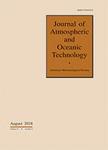版权所有:内蒙古大学图书馆 技术提供:维普资讯• 智图
内蒙古自治区呼和浩特市赛罕区大学西街235号 邮编: 010021

作者机构:Zhejiang Univ Ocean Coll 866 Yuhangtang Rd Hangzhou 310058 Zhejiang Peoples R China Zhejiang Marine Dev Res Inst Zhoushan Peoples R China
出 版 物:《JOURNAL OF ATMOSPHERIC AND OCEANIC TECHNOLOGY》 (J. Atmos. Ocean. Technol.)
年 卷 期:2016年第33卷第3期
页 面:597-606页
核心收录:
基 金:National Science Foundation of China Program for Zhejiang Leading Team of ST Innovation [2010R50036] 51004085
主 题:Remote sensing In situ oceanic observations Tracers Algorithms Observational techniques and algorithms Sampling Data processing
摘 要:Underwater cables play vital roles in marine engineering because they provide power and communication connections from the shore to an increasing number of sea installations. To ensure the system is operating reliably and continuously, it is necessary to detect the shapes of underwater cables in real time. However, this task is difficult to accomplish because the underwater cables are located in a dynamic and complicated subsea environment, which can cause changes in position, depth, and visibility. In this report, the current development of underwater cable shape detection methods, including visual, acoustic, magnetic detection, and multisensor fusion detection, and the advantages and disadvantages are described and analyzed. Furthermore, the disadvantages of these methods are addressed, which, based on survey platforms with high cost, include a long detection period and the failure to reveal emergencies. Then, the need to construct a simple and reliable system to detect the shapes of underwater cables is highlighted, and one possible solution based on bend sensors embedded in underwater cables is discussed.